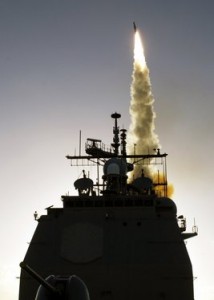 Even in today’s hyper-partisan environment, there’s one thing policymakers on both sides of the aisle agree on: eliminating wasteful defense spending is a crucial part of solving the nation’s fiscal crisis.
Even in today’s hyper-partisan environment, there’s one thing policymakers on both sides of the aisle agree on: eliminating wasteful defense spending is a crucial part of solving the nation’s fiscal crisis.
There’s just one problem: no one knows how big the nuclear budget is. There’s no line item for nuclear spending. The National Nuclear Security Administration doesn’t know how much the nuclear enterprise costs. Neither has the Department of Defense. (Or, if they have crunched the numbers, they haven’t shared the results with taxpayers or policymakers.)
It’s hard for Congress to exercise oversight over the nuclear weapons budget when they can’t get a straightforward answer on how big the budget is.
To inject some much-needed transparency into the nuclear budget debate, the Ploughshares Fund, a global security foundation (and, in the interests of disclosure, an ASP funder) has calculated the costs of nuclear weapons and related programs based on publicly available data.
The conclusion: the U.S. is on track to spend about $640 billion on nuclear weapons and related programs over the next decade.
Included in that topline amount is funding for some critical nuclear initiatives, like programs to secure and remove nuclear materials in vulnerable locations. Other nuclear programs are more questionable.
Take the B61 nuclear bomb modernization program for example. One a year ago the price of extending the service life of the nuclear warheads deployed in Europe was pegged at $4 billion. Today the estimated price tag is $10 billion. That’s $10 billion for nuclear weapons that most experts agree serve no military purpose.
It seems that the more you dig into the nuclear weapons budget, the more examples of waste and mismanagement you find. The cost estimate for one new nuclear facility has exploded from $375 million in 2001 to almost $6 billion today.
We learned recently that the price tag for another nuclear building – a plant to produce fuel that no one wants to buy – has increased by $2 billion. And then there’s the $6.5 billion facility that has to be redesigned, after half a billion dollars has already been spent on the project, because all the equipment won’t fit in the building.
Ending these boondoggles is a good first step towards eliminating the fat in the nuclear budget. But the underlying problem is the outdated nuclear strategy that calls for maintaining unnecessary nuclear capabilities.
Because of this outdated strategy, and members of Congress with vested interests in nuclear projects, the U.S. is planning to spend billions to modernize the triad nuclear delivery systems – bombers, submarines, and land-based missiles.
Some current military leaders (again, those with an interest in protecting the nuclear budget) insist that maintaining all three platforms is the right thing to do, even when spending cuts loom. But many retired military leaders (including General James Cartwright, former commander of the U.S. Strategic Command) argue that it’s time rethink the triad and the Cold War strategy that underpins it.
Maintaining excess nuclear capabilities is a strategic mistake. Nuclear programs that we don’t need divert resources from defense programs that we do need to address today’s security challenges.
The nuclear weapons budget has been hidden for far too long by shoddy accounting and a lack of transparency. It’s time for some transparency and accountability. It’s time for policymakers to exercise some oversight, scrutinize the nuclear budget, and eliminate waste and mismanagement. Our nuclear forces, and national security, will be stronger for it.


